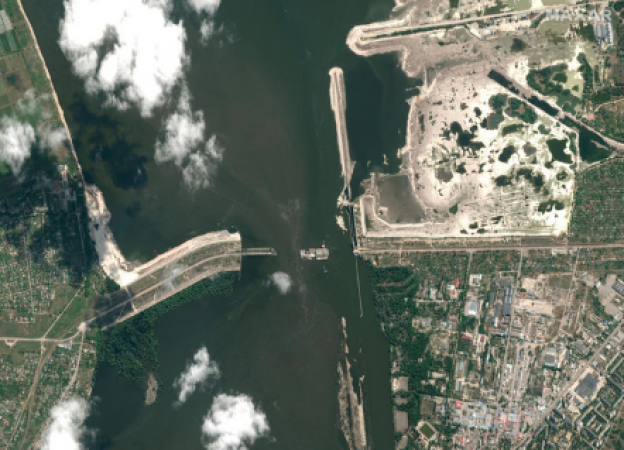
Kyiv: According to the New York Times, there is evidence suggesting that Russia was responsible for an internal explosion that led to the massive Kakhovka dam in a region of Ukraine under Russian control being destroyed this month.
The newspaper reported on Friday that its investigation discovered evidence suggesting an explosive charge in a passageway running through the concrete base of the dam detonated, destroying the structure on June 6. It cited engineers and explosive experts in support of this claim.
The Times reported that "the evidence strongly suggests the dam was destroyed by an explosion triggered by the side that controls it: Russia."
Also Read: Greek MP kicked out of Mitsotakis' party for remarks about shipwrecks
Separately, a group of international legal experts assisting Ukrainian prosecutors in their investigation stated in their initial conclusions on Friday that it was "highly likely" that Russian explosives were to blame for the collapse in the Kherson region of Ukraine.
The Kremlin claims that Kiev deliberately damaged the hydroelectric dam, which contained a reservoir the size of the US Great Salt Lake, in order to cut off a crucial water supply for Crimea and divert attention from a "faltering" counteroffensive against Russian forces.
Also Read: Indian tourists are attracted to Saudi Arabia by its cultural and historical sites
Russia is accused by Ukraine of detonating the Soviet-era dam, which has been in Russian hands since the beginning of the 2022 invasion, releasing floodwater across a sizable portion of the battlefield, destroying farmland, and cutting off water supplies to civilians.
Reuters was unable to independently confirm the assertions regarding what caused the explosion.
According to engineers quoted by The Times, the sequence of events leading to the destruction of the dam can only be determined after a thorough examination of the dam after the water has drained from it.
Also Read: Arab cadets work their way up to the ranks at the elite Pakistan Military Academy
"Erosion from water cascading through the gates could have led to a failure if the dam were poorly designed, or the concrete was substandard, but engineers called that unlikely," the newspaper reported.